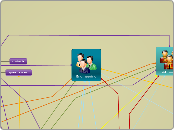EQUIPMENT AND TECHNIQUE FOR LOCAL ANAESTHESIA
EQUIPMENTS
infiltration & regional anesthesia
Basic requirements
syringe
cartridge
needle
LA solutions used for injection
citanest
3% prilocaine
xylocaine 2%
salt solution
fungicide
preservative
reducing agent
vasoconstricter
LA agent
topical/surface anesthesia
ethyl chloride spray
lignocaine spray
flavoured xylocaine gel
xylocaine ointment
TECHNIQUE
Positioning
Lower jaw injection
The operator should stand in front of the patient
The patient should be sitting upright in the chair
OR
Patient titled back and the operator stands behind the patient
Upper jaw injection
The chair should be positioned so that the operator will not have to bend too much forward and downwards.
The patient should be slightly tilted back in the chair.
Needle after use
Needle guards
Needle pliers
Recap with scoop technique
Nerve block
Inferior dental nerve block
Insert the needle just superior and posterior to the lingual
Area anaesthetized:
mandibular teeth to midline,
body of mandible,
buccal mucosa anterior to mental foramen,
anterior 2/3 tongue and floor of mouth (lingual nerve)
lingual soft tissues and periosteum (lingual nerve)
Mental nerve block
Inject at the junction of mandibular 1st and 2nd premolars and down 1 cm inferior to the marginal gingiva
Areas Anesthetized:
Buccal mucous membranes anterior to the mental foramen (around the second premolar) to the midline and skin of the lower lip and chin
Lingual nerve block
Inject on the lingual side of the second mandibular molar
Area anaesthetized:
The lingual nerve block anesthetizes the anterior two thirds of tongue
Buccal nerve block
Inject 1mm lateral to 3rd mandibular molar at the anterior border of the ramus
Area anaesthetized:
The mucous membrane of the cheek, vestibule and sometimes a small patch of skin on the face.
Steps for injection
Inject solution slowly
Aspirate (must be negative to proceed)
Retract slightly
Insert needle until bone is contacted
Position needle at targeted area
Apply topical anaesthesia
Retract cheek, lips, tongue depending on area
Infiltration anaesthesia
Palatal
Point of needle insertion: Midway imaginary line between gingival margin of the tooth and the median palatine raphe, along the long axis of the tooth at 90 degree to the palatine bone
Lingual
The point of needle intersection of 2 imaginary lines:
2nd line is a horizontal line above the floor of the mouth
1st line is a vertical line parallel to the long axis of the tooth
Buccal
The point of needle intersection of 2 imaginary lines at 45 degree
2nd line is the imaginary horizontal line along the mucobuccal fold
1st line is the imaginary vertical line of long axis of the tooth
Proper ways to inject
Ensure that the aspiration is negative
Bevel the needle towards the bone
Do not inject patient with heart problems more than twice
Do not inject on swollen area
Topical anaesthesia
Ointment
Adhesive patch
Spray
Gel









